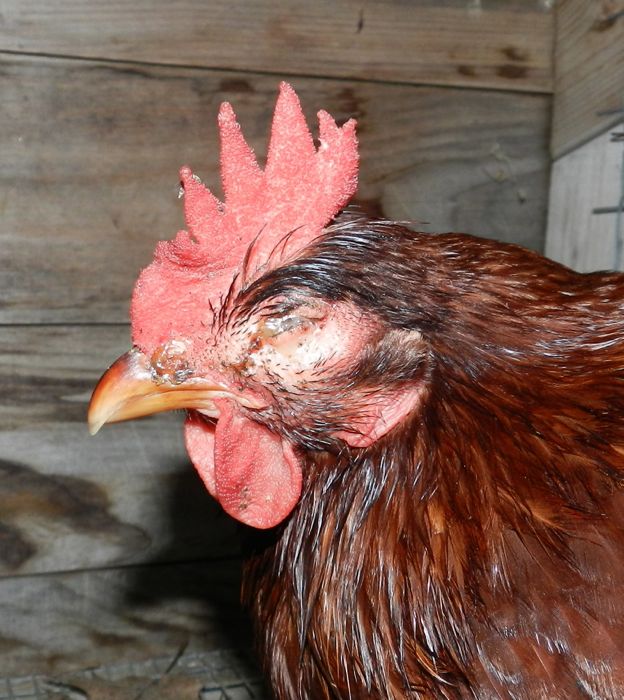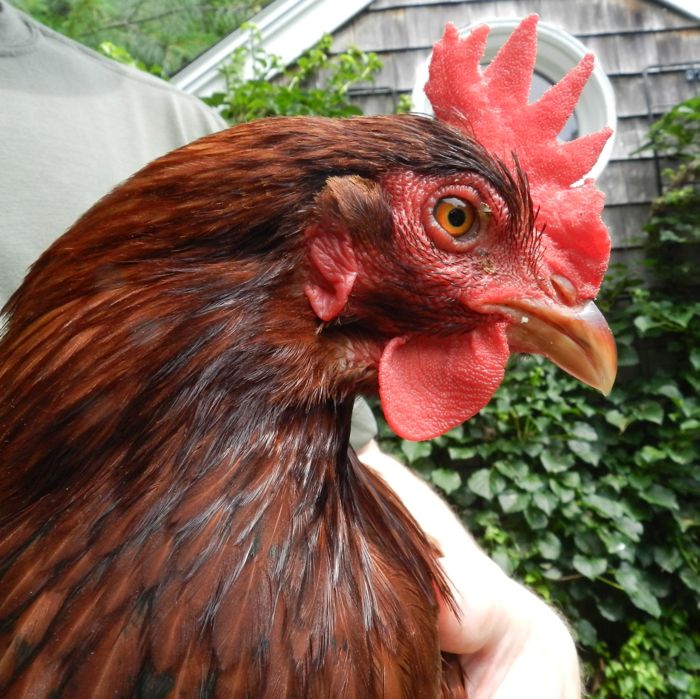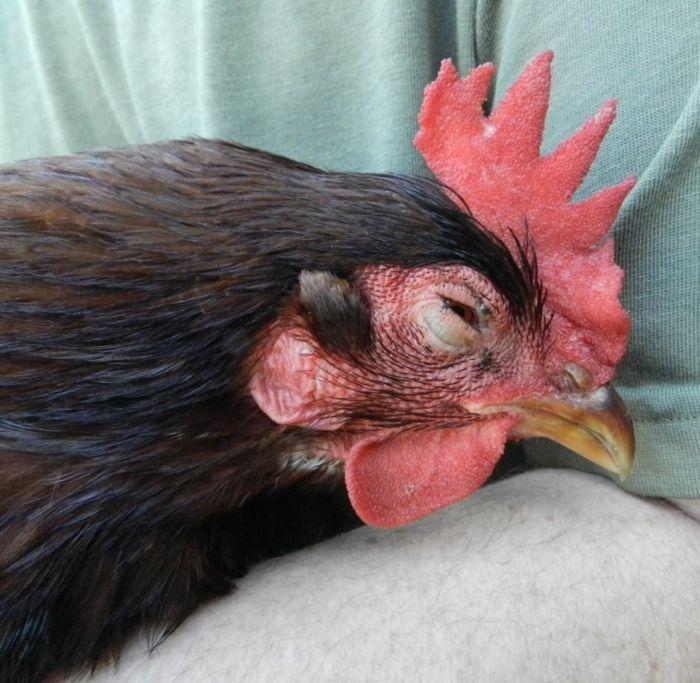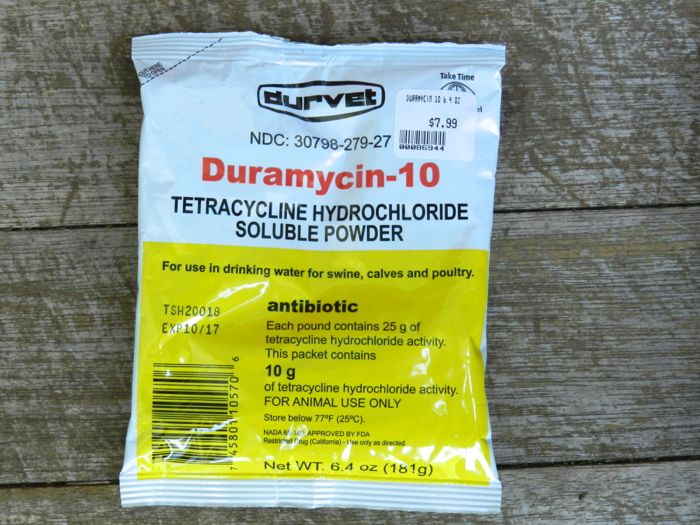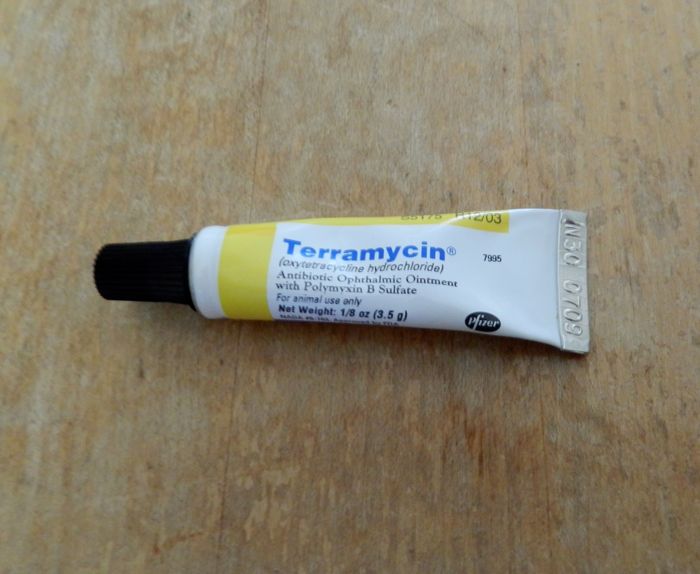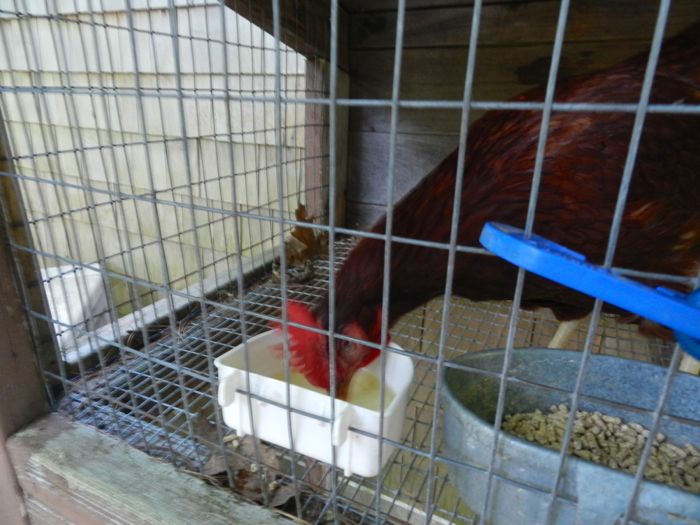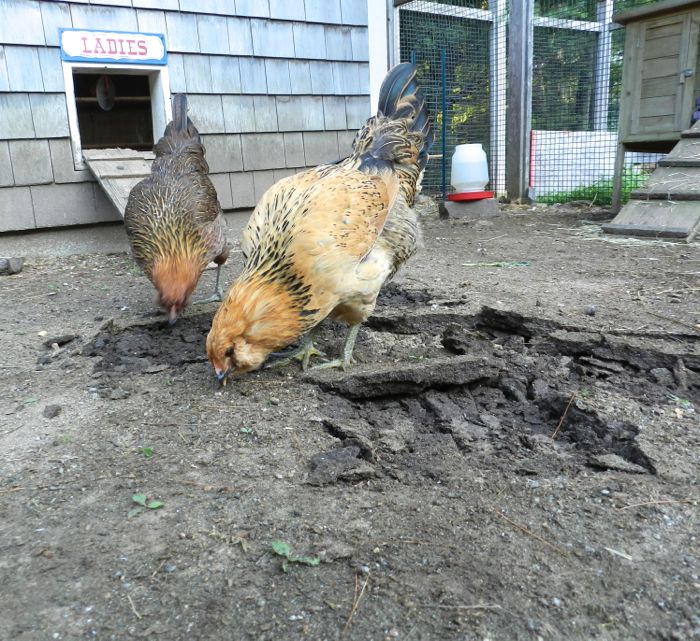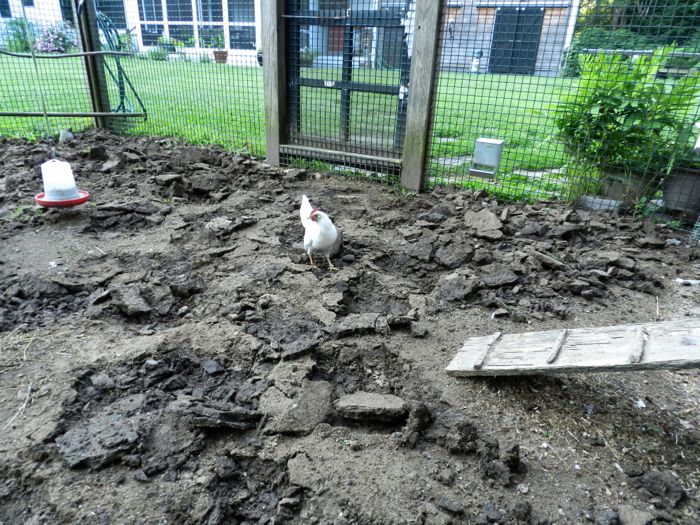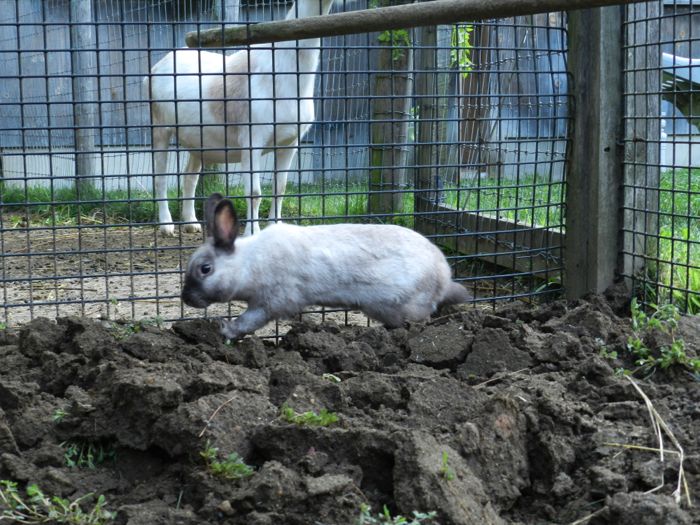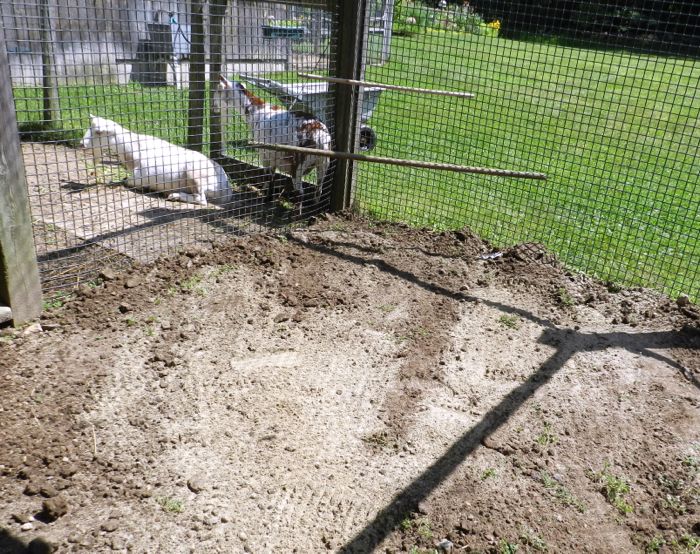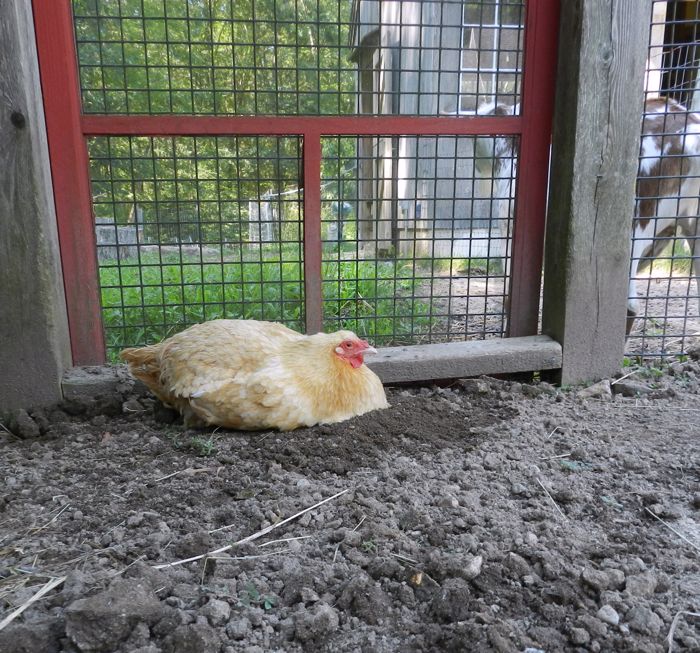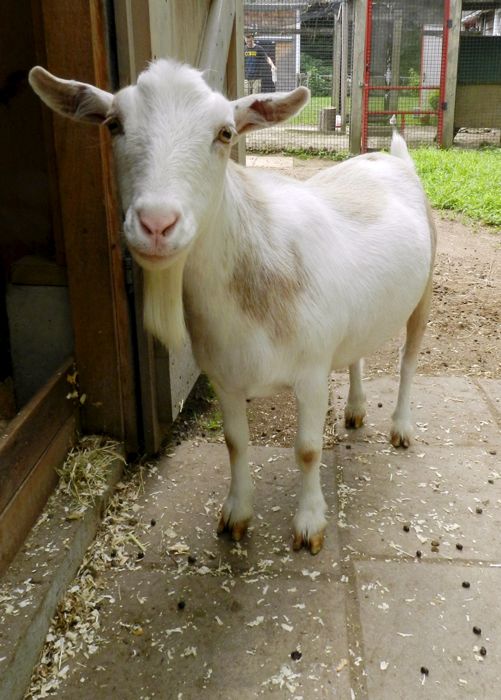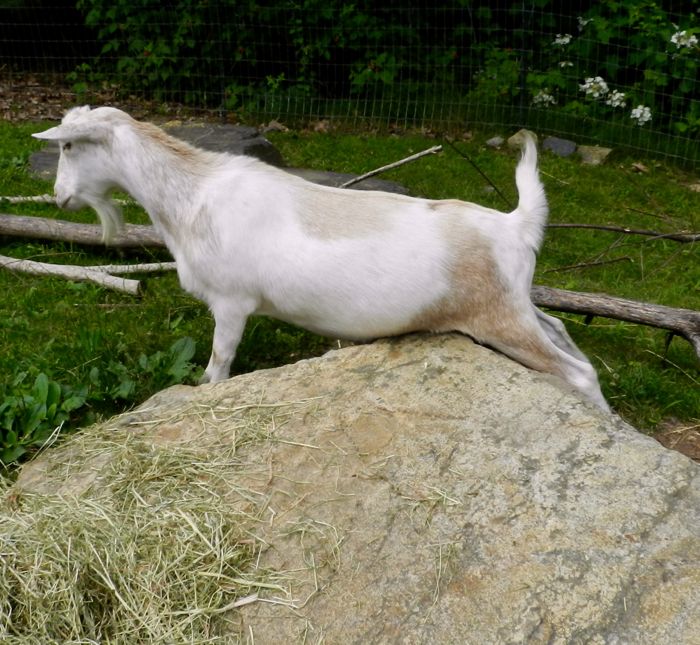Friday morning, when I opened up the Big Barn, Ruby remained on the roost. Obviously something was amiss. She was hunched, tail down, and one eye was swollen shut.
The other eye was clear,
but when she blinked, Ruby looked the image of misery.
The other Gems were bright-eyed and energetic. So, I do what I always do when there is a sick hen, I isolated Ruby and observed. Her comb felt feverish to the touch. I cleaned her face off with a cold, wet washcloth so that I could have a better look at her eye. It was so swollen that at first it looked to me like it had been pecked. Perhaps this was an injury?
I got out the broad-spectrum antibiotics, trade name Duramycin, which is available here in the States over the counter at feed stores. It is not approved for layers, but everyone uses it off label. I’ll be writing an entire post later this week about it. I mixed up 2 cups of water with 1/16 teaspoon of the powdered medicine.
Because Ruby couldn’t see well enough to drink, and because I wanted to get the drugs in her right away, I dosed her with a syringe. I have directions and a YouTube video of how to do this here.
I had some Terramycin eye ointment leftover from an injury to Scooter’s eye. I’ve kept it in the fridge, and although it’s well past expiration date, it is still useful. (You can buy this online, but there’s currently a shortage.) I squeezed a bit into Ruby’s crusty eye.
Within two hours, Ruby’s eye was looking better, I could see that this wasn’t an injury, but rather that I had a respiratory infection to treat. I’ve seen this here before. Hens have died from it. I’m not going to put a name on the disease. Unless you send a blood sample to a lab, you cannot identify whether it is Mycoplasma, or something else. I’ve paid for the lab tests in the past (quite expensive!) and know this for a fact. Those on-line charts identifying one disease from another are not accurate. What I also know is that by the time the tests come back half of your flock can be dead. Also, regardless of the tests, the treatment is the same. If you’re lucky, it’s bacterial in nature and antibiotics will be effective.
Luckily for Ruby, by midday she was able to eat, and drink her Duramycin-laced water. It was hot, and she was feverish, so I put her into a wire pen for air flow.
By Sunday afternoon, Ruby’s comb no longer felt hot, her eyes looked clear, and she was ready to go back in with the flock.
I think that perhaps the onset of this was instigated by the bout with infectious bronchitis. Secondary bacterial infections are cited in the literature as a frequently occurring after iB. I’d hoped that since Ruby had what seemed the worst case of iB, as seen by her laying eggs that look like this:
that she’d be the only hen affected. Unfortunately, when I went into the barn this morning, four hens were standing in abject misery with their eyes closed. I’ve treated all of them, and now the entire flock in the Big Barn are on antibiotics. There’s no sign of disease yet in the Little Barn, but I am watching carefully. My family and I were going to go on a 3-day vacation today, but we will be staying home. I can’t leave the hens like this, and I can’t ask my petsitter, who also has chickens, to care for them and then expose her own flock to disease.
I’d be guessing, and likely guessing wrong, if I blamed this bout of disease entirely on iB, or on wild birds, or a friend’s bringing it in on her shoes. I’ve had chickens on this property now for ten years. Diseases lurk. This is why pastured poultry farmers have mobile tractors – fresh ground reduces the risk of disease. That’s not an option in backyards. My hens are in ideal conditions, and yet they still get sick. Have a flock for any length of time and this will likely happen on your property, too.
I’ll be posting more this week about how the chickens are doing. Two years ago I lost my favorite hen, Lulu, to a similar outbreak. I’m hoping that I’ve caught this in time. Opal is not looking good. But I’ll do my best.
